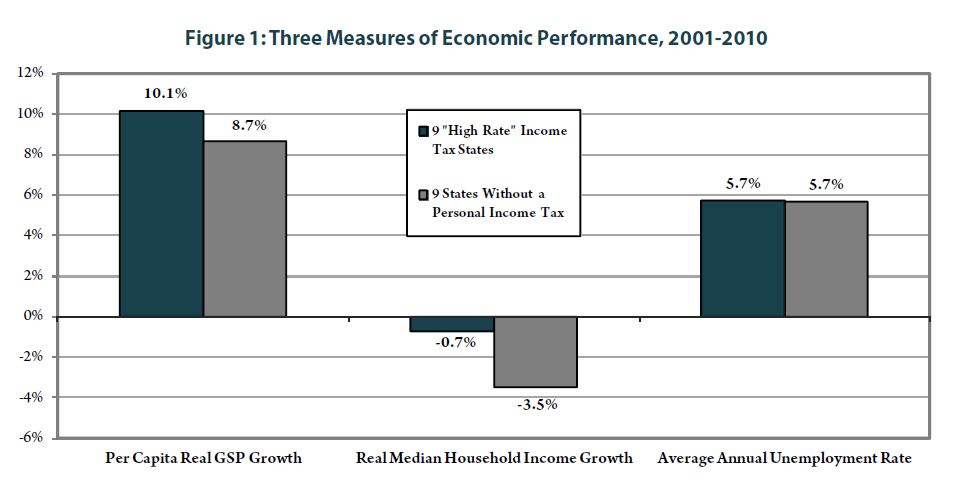If you want your state’s economy to grow, do the opposite of what ALEC and Arthur Laffer recommend.
Each year since 2007, the conservative bill mill and stealth corporate lobby group known as the American Legislative Exchange Council (ALEC) has teamed up with Dr. Arthur Laffer, known as the “father of supply side economics”, to publish “Rich States, Poor States” (RSPS).
RSPS ranks each state’s “economic outlook” based on 15 criteria that would bring tears of joy to any far-right lobbyist or economist. To maximize its score, a state would have to abolish individual and corporate income taxes, reduce or eliminate estate or inheritance taxes, undo the minimum wage, cap taxes overall, and pass/enforce anti-union laws.
Even if the road to prosperity is magically paved without tax dollars by low-wage, non-union workers (it’s not, but that’s for another time), Laffer’s analysis fails to examine whether states are able to deliver on their basic duties for their residents – like maintaining good infrastructure, supporting strong schools and higher education opportunities, or securing public safety.
Those activities require tax revenue – but Laffer pays them no heed. Instead, he gives undue weight to low tax rates and downgrades states with sustainable tax structures that are making investments in public goods and services that promote better economic growth.
Laffer goes on to double down on his (faulty) logic when ranking economic performance, by proclaiming that “no tax” states routinely outperform “high rate” income tax states. The problem, as the Institute on Taxation and Economic Policy (ITEP) notes, is that Laffer measures economic performance using just three variables, all of which tend to move in the same direction at once: population growth, total employment growth, and total growth in economic output.
Because states experiencing faster population growth tend to see more job growth and increased economic output anyway, Laffer is in effect measuring population growth three different ways and adding it all together, while completely excluding other economic performance standards – like employment, median income, or economic growth per capita.
Funny thing: when those factors are accounted for, Laffer’s methodology and ranking completely unravel.
ITEP compared Laffer’s “high tax rate” states to “low tax rate” states using more inclusive measures (per capita economic growth, median income, and unemployment rates) and found the nine “high rate” states actually do better (see graphic above), with higher economic growth per capita; smaller declines in median family income, and identical unemployment rates to the “low rate” states.
Think I’m being unfair? Think Laffer is measuring all the right things, and ignoring what should be ignored? Fine. Tomorrow, we’ll pretend none of these problems exist, and see how the ALEC/Laffer study holds up when measured by its own standards.
By EOI intern Ashwin Warrior
More To Read
January 6, 2025
Initiative Measure 1 offers proven policies to fix Burien’s flawed minimum wage law
The city's current minimum wage ordinance gives with one hand while taking back with the other — but Initiative Measure 1 would fix that
November 1, 2024
Accessible, affordable health care must be protected
Washington’s elected leaders can further expand essential health care
September 24, 2024
Oregon and Washington: Different Tax Codes and Very Different Ballot Fights about Taxes this November
Structural differences in Oregon and Washington’s tax codes create the backdrop for very different conversations about taxes and fairness this fall

